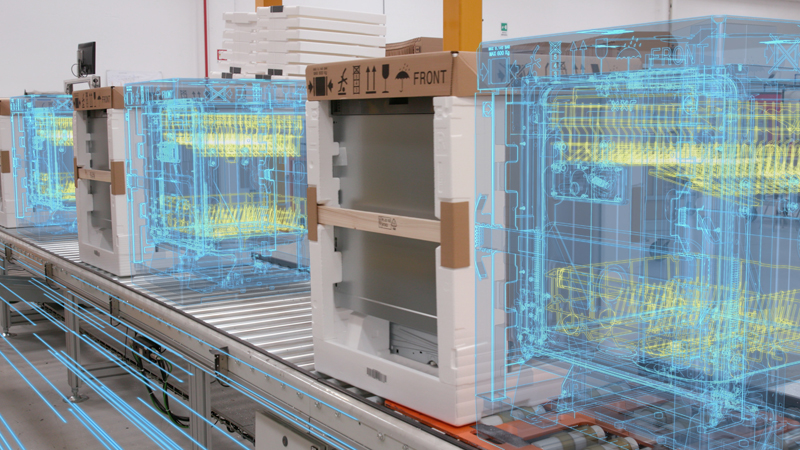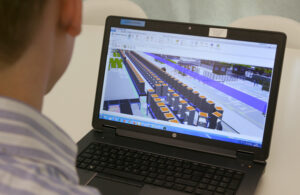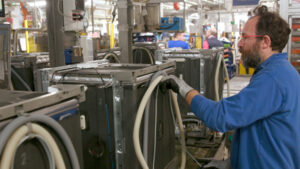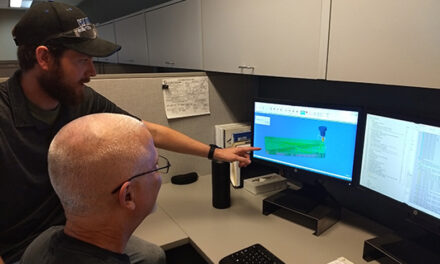
Quite a lot has changed since Electrolux founder Axel Wenner-Gren sold the first vacuum cleaner 100 years ago. To celebrate its 100th anniversary, Electrolux launched its “Better Living Program,” an action plan to enable better and more sustainable living for consumers around the world, with bold targets focusing on facilitating better eating and garment care, and a better home environment.
– We want to bring relevant and sustainable innovation to more and more consumers around the world, and at the same time make our business circular and carbon neutral, explains Jan Brockmann, chief operations officer, Electrolux.
 Achieving product excellence and customer satisfaction requires continuous operational excellence. This is quite the business challenge when you are talking about 60 million products for people in over 150 countries produced at 53 production sites worldwide (without forgetting the 3,000 suppliers and 100,000 delivery points globally).
Achieving product excellence and customer satisfaction requires continuous operational excellence. This is quite the business challenge when you are talking about 60 million products for people in over 150 countries produced at 53 production sites worldwide (without forgetting the 3,000 suppliers and 100,000 delivery points globally).
– We are good at managing global complexity. More and more, we are applying digital tools to keep the flow going. At the end of the day, it is all about transparency, efficiency and a good consumer experience, adds Brockmann.
Everything starts with the consumer experience
Like most companies, Electrolux realizes the digital world is driving their market. Consumers want to be able to go online, order a robotic vacuum cleaner and have it arrive on their doorstep at a precise time the next day. To meet these consumer requests, the Electrolux team knows they need to continuously innovate, improve their product portfolios and enhance customer experiences. To remain market leaders, the Electrolux team needs to react rapidly not only with a highly automated production process, but also an increased speed of innovation. To succeed in this, Electrolux counts increasingly on digitalization.
– We’re driving our big bets across Electrolux, says J. P. Iversen, chief information officer (CIO), Electrolux.
– This includes a few select areas that we think will make the difference in the future. This includes harmonizing our ERP, PLM and CRM landscapes. A lot of what we are doing now is putting the foundation in place to build seamless digital services for our consumers and customers.
One common PLM backbone
One of the core tools used for company-wide digitalization and process management at Electrolux is Teamcenter software, an intuitive, harmonized and digitalized product lifecycle management (PLM) environment.
– In 2010, we took the decision to have one PLM environment for the entire Electrolux group. The Teamcenter rollout, which we completed in 2013, covered all the regions, about 40 locations and over 4,000 users worldwide, explains Ove Palmberg, head of global PLM.
– One of the reasons we selected Teamcenter is the portfolio is very broad. We could cover R&D and engineering change management, including components and eBOM management and article acceptance procedures. We already knew we would need to extend the PLM backbone to other functions like quality, purchasing manufacturing, etc.
Today, other complementary Siemens tools have been implemented on a global scale. Digital factory solutions based on the Tecnomatix portfolio enable global production sites to be optimized and automated. The operational side of things is supported by advanced product development processes based on Simcenter software simulation and testing solutions at core global research and development (R&D) centers, including the main R&D center in Porcia, Italy.
– Speed of innovation, reliability and logistical excellence are becoming more and more important, says Brockmann.
– Meeting these new challenges would be impossible without great digital tools in operations, product lifecycle management and the supply chain. Siemens plays a crucial role helping Electrolux keep all this together, because it is the mother system of digital product development and, increasingly, of digital operations. The Siemens systems have contributed to a large extent in lowering our development time by 20 to 30 percent.
Leveraging Industry 4.0 and digital manufacturing
Electrolux’s digital transformation didn’t happen overnight. Over a decade ago, Siemens and Electrolux started their digital partnership – knowing that Industry 4.0 and digital manufacturing was the route to future success.
– We had run out of ways to cut costs in this industry, says Ernesto Ferrario, senior vice president, global industrial operations.
– First there was a wave of lean manufacturing, and then there was a wave of moving production to cheaper countries. Today, we must find a new methodology for cost savings while being able to deliver better quality. This is why we started to think about automation.
– With automation, you get a repeatable process and when you match this with virtual simulation, you can shorten both the product and production cycles. Simulation does in one week what two engineers do in three months.
Simulation: the core of every business decision
The route to the digital truth started with adopting the Teamcenter environment and has resulted in highly advanced digital factories developed using Tecnomatix tools.
– We have a really nice example from our Curitiba plant in Brazil. During engineering, we were installing completely new production lines. Using simulation in Tecnomatix, we found 16 unexpected issues. Analyzing these issues, we realized that without simulation, we would have lost at least six months production time and incurred more than $500,000 of extra costs.
The Solera plant provides an example
For example, at one of Electrolux’s dishwasher plants in Solera, Italy, production has become highly automated. Specialized automated guided picking carts and automatic elevated trams zoom dishwashers along from production station to station. The optimized and redesigned plant is much more efficient than traditional plants. On one line, specialized robot-human teams assemble dishwashers and there is even a standalone robot, ironically nicknamed, “The Voice,” by her colleagues, because she can’t sing and chat along with them while assembling dishwashers.
 The team in Solera is currently trying out wearable devices that link to the Siemens digital backbone, including smart watches that alert line supervisors of real-time production data analytics and issues. – Once you have the backbone done, then you can start playing, says Pacini.
The team in Solera is currently trying out wearable devices that link to the Siemens digital backbone, including smart watches that alert line supervisors of real-time production data analytics and issues. – Once you have the backbone done, then you can start playing, says Pacini.
– This is the fun part of the job because you can start to implement different tools to see how people are reacting and how they are changing the way they work. This includes wearable devices that include real-time analytics, alerts and dashboard information.
Creating 53 digital factories
Four years ago, the team started to implement various types of digitalization in each plant. Today, practically all the plants in North America, Latin America and Europe and the larger plants in the Asian Pacific have a digital backbone in place.
– We’re in the fortunate situation now since we have gone down the path of developing one common approach around the overall data picture and this is what we are driving globally, says Iversen. – From that perspective, we feel the building blocks are in place, but how do we realize real business and consumer value? This is where we are focusing a lot of effort now.
The next steps
With more and more digital factories in place, Electrolux is focusing on taking their digital twins to the next level. This includes creating super bill-of-materials (BOMs) or 150 percent BOMs. With overloaded BOMs, the development teams can easily configure several products from the same data set for manufacturing systems worldwide. The goal is to have 100 percent digitalized, modular factory models and super bills-of-materials defining multiple product configurations. With this in place, Electrolux counts on a significant return-on-investment (ROI), going to market 20 to 30 percent faster and saving 15 to 20 percent in costs, explains Palmberg.
– When we have this fully implemented, we will have a completely different way of managing our product portfolio. It will become much easier to manage our large product base in a more efficient way. We will be able to increase our speed of innovation significantly.






